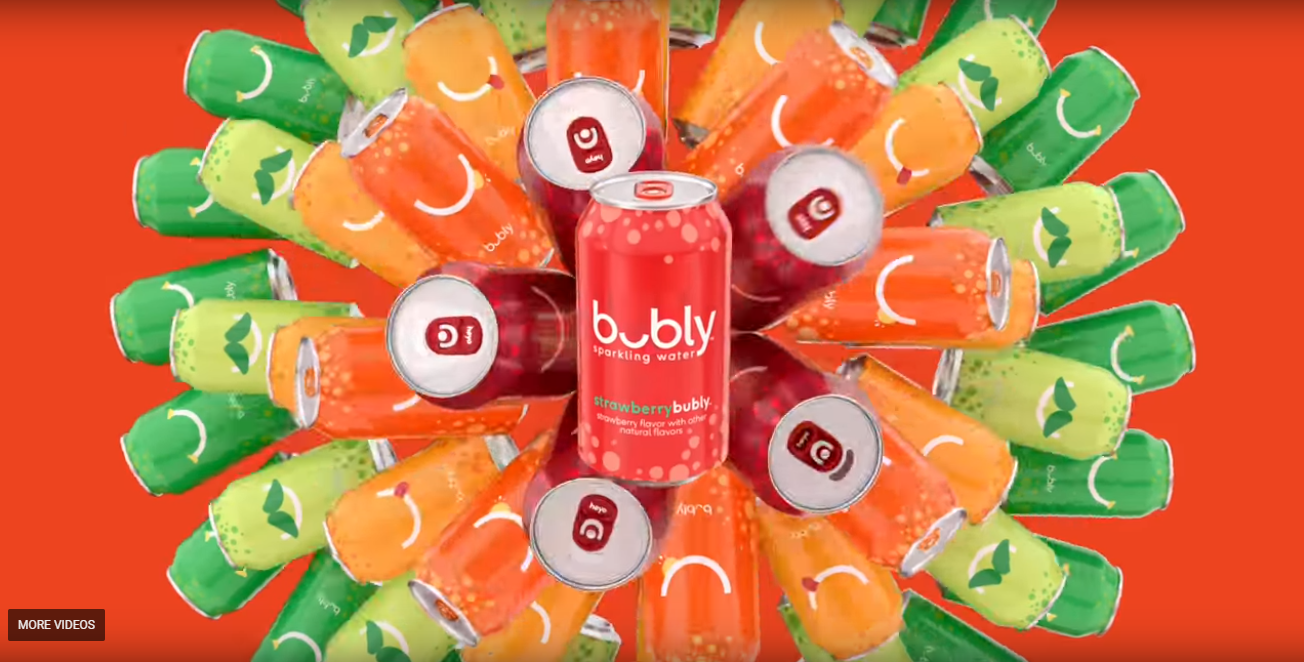What Happened to Brand Loyalty - Is La Croix in Trouble?
Though National Beverage’s La Croix was founded in 1981, it’s popularity did not surge until around 2010 when the founding of Instagram took place. An Instagram-worthy, fresh look with all of the health benefits that sugary sodas lacked, La Croix swept American consumers off their feet.
Sparkling water’s popularity is not a new trend - it makes up a third of Europe’s beverage market and, as of 2016, 5.5% of America’s.
There are plenty of other options next to La Croix such as Polar, Poland Spring, Simply Balanced, or Perrier, but the vibrant and unique brand of La Croix sets it apart from the crowd, even against Coca-Cola’s attempts with Topo Chico and Dasani Sparkling.
La Croix was delightfully marketable, visually pleasant, affordable for young consumers, and different from it’s bubbly counterparts...until PepsiCo’s Bubly launch in February 2018. There isn’t complete evidence that one is superior to the other since preferences rely entirely on tastes. This upstart competitor brings into question whether or not the consumers’ brand loyalty is real.
Who Are The Consumers?
In 2016, Beverage-Digest research showed that soda, fruit juices, and diet beverage consumption was at an all time low. As consumers have become more health conscious, they have turned towards sugar-free/zero-calorie options like natural flavored carbonated water. This behavior lead to La Croix sales jumping from $646 million in 2015 to $827 million in 2017.
More people in general are making healthier purchasing decisions. La Croix acts as a substitute to previous soda addicts, providing a refreshing taste without the sugars and calories. La Croix’s marketing generally caters to younger generations such as those in Generation Z and Millennials.
How Do These Brands Currently Position Themselves?
La Croix avoids traditional marketing efforts and mainly makes it’s splash on social channels (specifically Instagram) with social influencers. Social influencers have less followers than big-time celebrities so they seem more “authentic” to the Millennial and younger generations. These micro-social influencers share hashtags, recipes, videos, or brand experiences with followers to incorporate the brand into their everyday life. The product is marketed as the alternative to soda, is cheap, and catches the consumer’s eye with a modernly fun “Picasso-esque” packaging and unique beverage names like “Pamplemousse.”
PepsiCo’s Bubly whimsically popped into the sparkling water scene as one of PepsiCo’s "biggest product launches" during ABC's broadcast of the Academy Awards. The product offers a variety of “Bubly personality” flavors like Limebubly, Grapefruitbubly, Strawberrybubly, Lemonbubly, Orangebubly, Applebubly, Mangobubly and Cherrybubly with friendly, bright, and quirky captions on the packaging.
Unlike La Croix, Bubly is capitalizing on traditional marketing efforts by purchasing television ads and hiring a celebrity endorser. Celebrities are not typically favored by younger audiences, but PepsiCo brilliantly structured a gif-lead campaign. Making relatable and silly gifs of Neil Patrick Harris provides consumers with sharable content that speaks to Millennials and Generation Z.
According to Mintel Purchase Intelligence, Bubly’s emphasis on “fun” in their flirtatious and amusing advertisements has half of consumers aged 18-34 interested in purchasing their product compared to 43% interested in other sparkling waters. Mintel also found that 38% of sparkling water fanatics consider “fun” an important attribute when selecting a brand.
With the Bubly launch, PepsiCo realizes they cannot earn the younger audience on flashiness alone. The company is altering their brand lifestyle to a more positive vibe starting with Lays’ #SmileWithLays campaign to Bubly’s #CrackASmile campaign. PepsiCo is working towards becoming the consumer’s favorable choice by promoting more smiles with the end goal being - bring their consumers happiness. Knowing that consumers like personal gratification and doing good for the world, PepsiCo additionally ties their smile campaigns to charities.
La Croix is definitely “hip” and trendy, but, in order to keep up, they need to make the brand more relevant to the consumer’s needs and passions. Generation Z, for one, is focused on philanthropy and activism.
Does Brand Loyalty Still Exist?
Of course brand loyalty still exists, but, because younger audiences have more purchasing power and are more prone to change their minds, brands should be weary of getting too comfortable. For the longest time, Setup only had La Croix in the company fridge. We still love La Croix, but, just like in the market, Bubly has made its way into the fridge and is there to stay. It’s taste and overall positive and silly feel matches our brand...so it’s hard to say!
Just Some Drink for Thought…
Brands can’t coast on their previously established followers’ loyalty. Leaning on what used to work is dangerous. Both La Croix and Bubly are quick to adapt and meet consumers where they are at - on social media channels, constantly posting funny gifs or captivating pictures.
Brands must earn their consumer’s love and loyalty by constantly innovating, assessing consumer data to track consumer preferences and trends, and using the market’s behavior to inform marketing campaigns and strategies.
Time may tell if there is a true victor in the seltzer water department, but PepsiCo saw an open opportunity and is not backing down.

